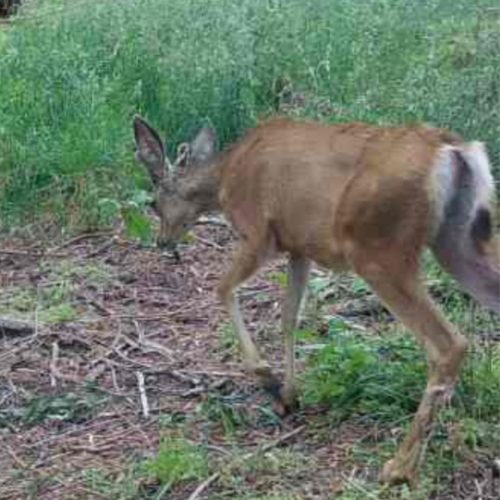Yellow-bellied Marmot
Common Name: Yellow-bellied Marmot
Scientific Name: Marmota flaviventris
Location: Utah Lake Field Station
Invasive: No
The Hutchings Museum has observed a total of seven Yellow-bellied Marmots on the property near Utah Lake. Two adults and five babies have been observed living in a burrow under an old tree. There have also been lone adults spotted. There may be a higher number of adult female Marmots since Marmots have a “harem-polygamous” mating system in which a single male will reproduce with three or more females at a time. We have taken photos of Marmots at the field station.

